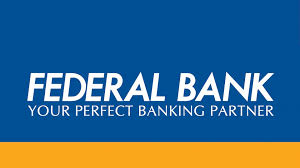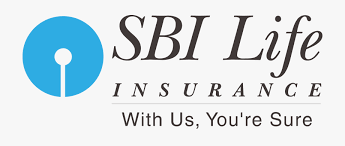

Sector: Banking
Federal Bank Ltd is a major Indian commercial bank in the private sector headquartered in Kerala having 1,251 branches and 1,942 ATM/ Recyclers and a loan book size of approximately Rs116,000cr. It offers a variety of services such as retail and wholesale banking, depository services, cash management services, merchant banking services, insurance, mutual fund products etc.
In Q2FY20, the Net Interest Income (NII) has declined marginally on a sequential basis, at the same time grew at a moderate phase of ~10% on a YoY basis, causing a 14bps sequential decline in Net Interest Margins (NIMs). A lower credit offtake at ~Rs3,800cr compared to the deposit growth of ~Rs7,000cr had about 4bps impact on the NIMs. The increase in operating expense by around 28% on a YoY basis on account of one-off rise in employee expenses had let to a muted growth in pre-provision operating profit (PPOP) at 3% YoY. We expect these NIM contraction to get reversed in the second half of FY20.
The bank’s total loans & advances registered 15% YoY growth with retail and agriculture segment growing at 25% and 21% respectively on a YoY basis. With wholesale to retail advances in 51:49 proportion, the bank increased the market share in advances by 4bps YoY to 1.16%. The bank has performed well on deposit front, rising market share by 7bps on a YoY basis to 1.07%. The capital adequacy ratio of the bank is at 13.98%, in which Tier-I CAR forms 12.87%.
In the current quarter, the gross/net NPA marginally increased on a sequential basis to reach 3.07%/1.59% compared to that of 2.99%/1.49% in Q1FY20 and improved on a YoY basis compared to 3.11%/1.78% in Q2FY19. This was mainly due to the increased slippages at Rs540cr, mainly led by the corporate segment at Rs199cr with a large corporate account of ~Rs180cr slipped in the current quarter. The bank’s exposure to two stressed HFCs of ~Rs275cr remains standard, and the bank has provided 15% provisions to these accounts. The exposure of ~Rs200cr to IL&FS is fully serviced till now and the bank expects it to be taken out this quarter. The bank’s provision coverage ratio (PCR) stands at 66.2% as of Q2FY20 compared to 67.4% in Q1FY20.
Excluding the one-offs that impacted NIMs and the one time increase in employee expenses, the bank has maintained its consistent performance in the current quarter. Since the stock is trading at ~22% discount to last 5-year average P/B (1yr fwd), we value the stock at 1.4x Adj. BV of FY21E (previous 1.5x) and upgrade our rating to Buy.
Analyst: Abijith T Cherian, Geojit Financial Services Ltd., INH200000345
General Disclosures and Disclaimers: Federal Bank Ltd – Click Here

![]()
Sector: Automobile – 2/3 Wheelers
TVS Motors (TVS) is the third largest two- wheeler manufacturer in India with a market share of 14.8% in FY19. Q2FY20 revenue de-grew by 13%YoY due to sluggish Industry demand and heightened competition in the entry level Motorcycle (MC) segment. Despite price hike TVS volume growth came below expectation. For the quarter volume declined by 19%YoY in which domestic volume fell by 24%YoY whereas export grew by 6%YoY. TVS brands like N-Troq 125 and Apache continue to witness strong traction in export market. However, growth from the domestic market remains negative. EBITDA margin improved by 20bpsYoY to 8.8% marginally in line with our estimates. PAT grew by 20%YoY owing to Rs 76cr of exceptional income benefit. Adj. PAT de-grew by 15%YoY. 3W volume grew by 9%YoY owing to strong export to the new geographical market. Despite 4% earnings increase through corporate tax reduction, higher depreciation and interest cost negated the gain for FY20E.
We expect the industry to show some pick up in Q3 and Q4 due to nearing festive season and normal monsoon, while Q4 depends upon BSVI transition. The company has maintained its market share for the quarter. For H2FY20 TVS outperformed the industry growth by 4%YoY (-11%YoY) versus –14%YoY industry growth. The new launch ‘Redeon’ in the commuter segment is well accepted by the customers. We factor 7% CAGR in revenue over FY19-21E driven by the price hike, normal monsoon, improvement in export, revival in rural demand and superior product mix. We lower our volume estimate and factor –5%/4% for FY20/FY21 respectively.
New products launches are targeted towards filling gaps in their product portfolio and would improve product mix. The new model N-torq 125cc scooter targeting towards youth segment has received positive response and the company expects monthly run-rate to exceed 20,000 units. The management has indicated that it will not resort to price war as it affects long term brand value. They also reiterated to launch its first Electric variant in scooter segment by the end of FY20. TVS’s focus remains on cost reduction efforts such as Value engineering, alternative sourcing and localization. Positively TVS could bring down the RM import from 14% to 10%.
Despite lower volume and heightened competition in the commuter segment TVS posted 20bpsYoY (80bpsQoQ) increase in EBITDA margin at 8.8% for the quarter. However, at CMP the stock is currently trading at a premium valuation of 31x and 26x for FY20E /21E respectively. We value TVS at 25x FY21E EPS and maintain our reduce rating.
Analyst: Saji John, Geojit Financial Services Ltd., INH200000345
General Disclosures and Disclaimers: TVS Motors Ltd – Click Here


Sector: Insurance
SBI Life Insurance Company Limited, is a joint venture between SBI and BNP Paribas formed in 2001, which offers individual and group insurance plans, including traditional and unit linked plans. Its products cover life, health, annuity, pension and variable insurance. It currently has an AUM of 1.5 trillion.
In Q2FY20, gross written premium (GWP) increased 33.3% YoY to Rs. 10,243cr driven by new business premium (NBP) which grew 33.8% YoY to Rs. 4,670cr, and renewal premium grew 32.8% YoY to Rs. 5,574cr. During the quarter, annuity business grew strongly by 313% YoY to 2,669 policies amounting to Rs. 310cr. In H1FY20, SBI Life’s market share increased 200bps YoY to 21.8% in terms of NBP among the private insurers.
In H1FY20, new business margin, calculated as VONB (value of new business) to New Business Annualized Premium Equivalent (APE) rose 100bps YoY to 20.2% (of which 300bps negative impacted by downward interest rates movement), as VONB grew 33% YoY to Rs 9,400cr, while new business APE (amount of annualized first year premiums underwritten by the company during the period) grew 26% YoY to Rs. 4,670cr. Despite the strong growth in premiums and margins, Profit after tax declined 48.2% YoY to Rs. 130cr due to higher provisions. Higher provisions in Q2FY20 of Rs. 70cr was on account of Rs. 67cr related to DHFL and the remaining due to diminution in value of assets. Solvency ratio rose to 2.20x (vs 2.17x in Q1FY20), as against the regulatory requirement of 1.5x while the 13M/61M persistency ratio, which indicates the stickiness of premiums, improved to 83.1%/59.6% (vs. 80.0%/55.5% in Q2FY19).
The company has consistently delivered strong growth in new business premiums, driven by group and individual accounts along with strong distribution network including 121,600 individual agents supporting the SBI Life Insurance growth story. The stock is currently trading at 3.3x FY20E EV. We value SBI life insurance at 3.2x FY21E EV and reiterate our BUY rating on the stock
Analyst: Abijith T Cherian, Geojit Financial Services Ltd., INH200000345
General Disclosures and Disclaimers: Please follow the link given SBI Life Insurance Co. Ltd– Click Here

![]()
Sector: Media
Q2FY20 revenue grew at ~37%YoY mainly attributed to higher footfalls (9% growth) and improvement in occupancy rates (+580bps) YoY. Occupancy stood at a higher rate of 37% (vs 32% in Q2FY19). Net ticket revenue and F&B collections registered a YoY growth of 32% and 38% respectively, while advertisement revenue grew by 16% YoY on account of revenue addition from SPI cinema. SPH numbers also grew by 13% YoY in Q2FY20 which was primarily driven by a change in menu focusing on a variety of offerings at different prices.
PVR has added 6 new screens in Q2FY20 and we expect them to add ~30 more screens in FY20 given the current momentum. PVR has also completed acquisition of SPI cinemas in Q2 FY20 whereby they will be having higher revenue in the coming quarters. SPI cinemas reported a modest quarter compared to Q1FY19 which is in line with our expectations. The strong growth PVR has reported this quarter is also because SPI cinemas numbers were incorporated into the financials only in the middle of the base quarter and hence the company got the benefit of a lower base. The company will also continue to pay tax under the regular tax rate (34.94%) as the cash outflow is lower in present case as compared to the revised tax rate of ~25.17% for at least next 2 financial year. Further, reduced MAT rate to 15% from earlier prevailing rate of 18.5% will lead to accelerated utilization of MAT Credit.
EBITDA margins increased by 360bps YoY (excluding Ind AS-116 impact) on account of higher occupancy rates, increased SPH (12%) and higher exposure of SPI Cinemas in the revenue mix. The quarter has also been good from operations perspective with business delivering highest ever footfalls with all other operating parameters witnessing robust growth. So, despite the general economic slowdown in the performance of the business for Q2, there has been good support from content. We thus increase our revenue estimates by 4.9% and 4.8% resp. on account of better performance in Q2FY20 and factor a higher EBITDA and PAT.
Considering the aggressive growth strategy of the company, ongoing good content in pipeline and synergy from SPI acquisition, we are positive on the long term prospects. We however value using EV/Sales to effectively include Ind AS–116 adjustments (current 1yr fwd being 2.58) and upgrade the rating to Buy at 2.8x FY21E EV/Sales.
Analyst: Dilish K Daniel, Geojit Financial Services Ltd., INH200000345
General Disclosures and Disclaimers: PVR Ltd– Click Here










